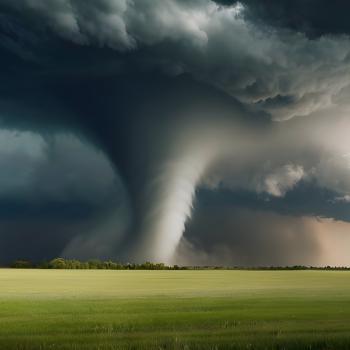
The Buddhist idea of nirvana is sometimes compared to the ideas of heaven or Paradise as found in the three Abrahamic religions—Judaism, Christianity, and Islam—but this is not correct. Heaven is normally described as a place of joy and happiness in the presence of God. Buddhists do not believe in a God who rules the world and judges human lives, rewarding them with heaven or punishing them with hell. Rather, Buddhists understand their lives—past, present, and future—as cycles of ignorance and suffering in a ceaseless process of reincarnation that can only be overcome with enlightenment.
Nirvana, then, is usually understood as the achievement of that enlightenment, which culminates in a total cessation of suffering. It does not refer to a place that a person enters after death, but to an escape from samsara, the endless cycle of death and rebirth. To attain nirvana is to extinguish all sense of the self or individual reality. The word “nirvana” literally means “blown out,” like a candle flame. There is no conscious existence of the self in nirvana.
Nirvana can be partially achieved in this life. When enlightenment is attained and all attachments have been eliminated, the Buddhist experiences a state of nirvana. Such people are known as arhats. Upon their death, however, there is no reincarnation, no rebirth into the cycle of life and death, only non-existence as the suffering self. In the Mahayana Buddhist traditions, some who have attained enlightenment may choose not to enter the final state of nirvana upon death. Instead, they may choose, out of compassion, to reenter the cycle of reincarnation so that they can continue to help others toward enlightenment. These are called bodhisattvas.
While enlightenment and nirvana are considered the goals of Buddhism, not every Buddhist aims to achieve enlightenment within a lifetime. In fact, most Buddhists do not see themselves as likely to attain enlightenment in this lifetime, nor do they pursue it as a serious goal. That is often left to the Buddhist monks and nuns. Instead, many Buddhists simply aim to accumulate enough merit or good karma in this life to be born into a better life after they die.
Pure Land Buddhism is one of the best known and most popular schools of Buddhism in East Asia. Followers of this form of Mahayana Buddhism aim to accumulate good karma and be reborn into the Pure Land with Amitabha Buddha, a buddha who lived many lives as a bodhisattva and earned enough merit to create a land where those who call on his name can be reborn. Those who manage to be reborn into the Pure Land are not liberated from the cycle of rebirth, but they are much more likely to reach enlightenment than one who is reborn into a life on earth as it is much easier to work toward enlightenment and liberation while in the Pure Land. As such, those who practice Pure Land Buddhism believe that being reborn into the Pure Land is the next step on the path to enlightenment.
To learn more about Buddhist concepts of afterlife and salvation, read here.
5/10/2024 4:12:50 AM










